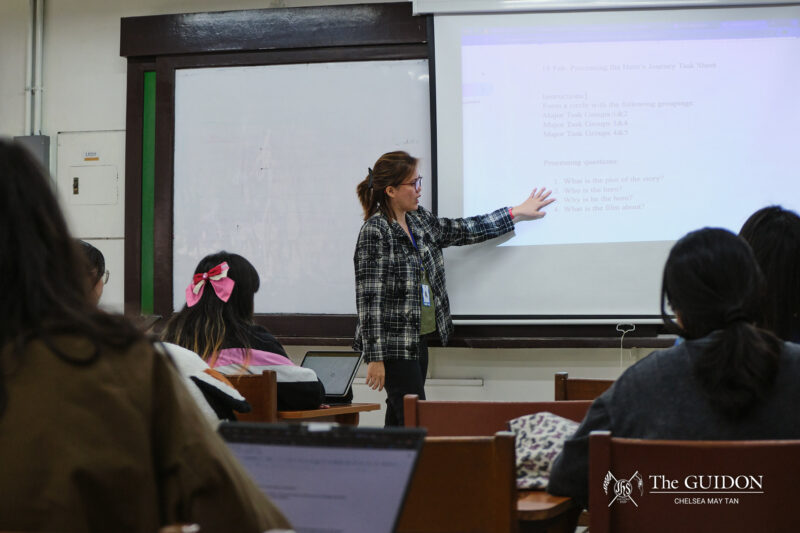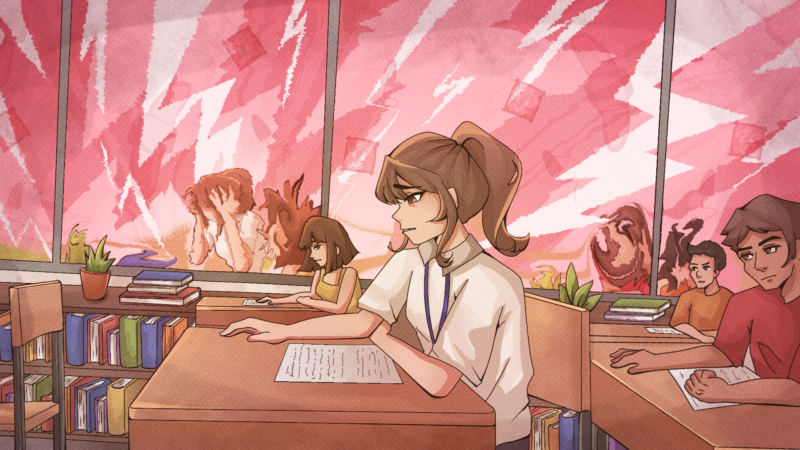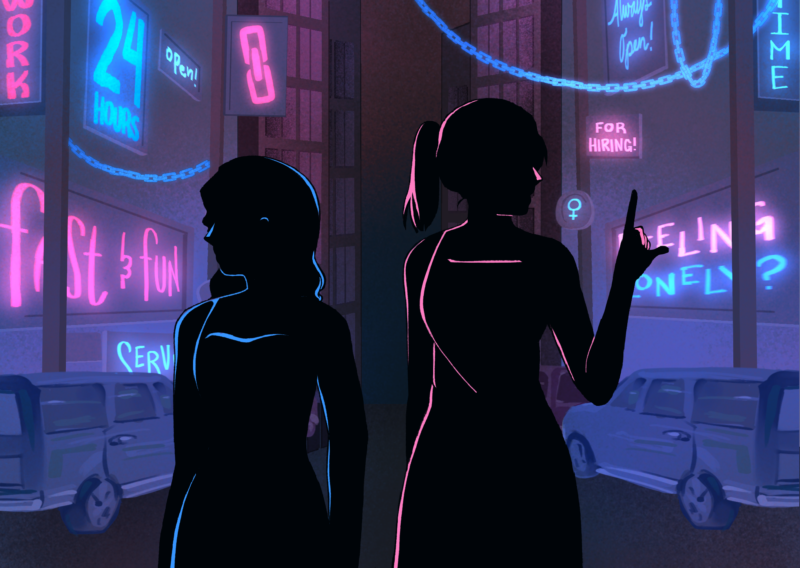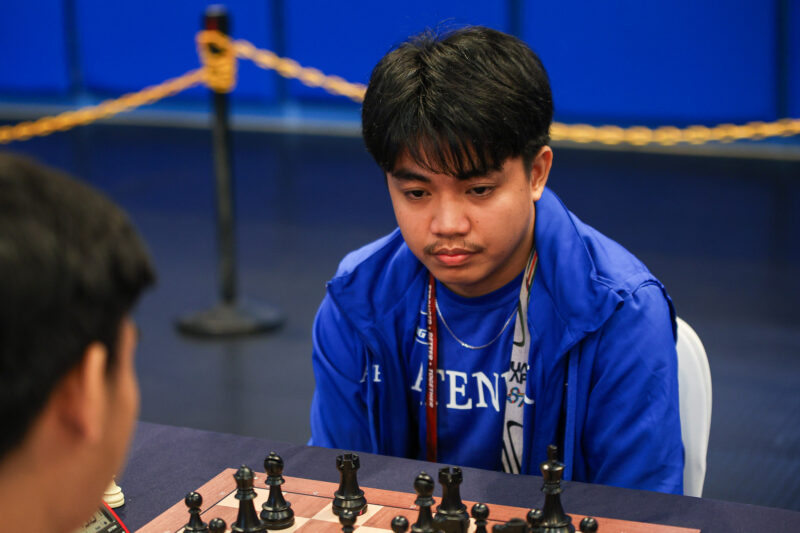ART TAKES varying forms—from visual, performing, literary, and musical. However, all artistic endeavors share a common need for spaces, where creativity can flourish beyond the classroom and talents can be recognized.
In the Ateneo, this seeming need for space is reflected in the rising number of art bazaars on campus and students participating in them. Thus, as student artists gain visibility through these events, the demand for more diverse and accessible platforms continues to grow.
Laying the canvas
The Ateneo provides numerous opportunities for students to engage with the visual arts. For all students, regardless of their major, the Ateneo offers the core curriculum course, Art Appreciation (ArtAp 10), which primarily serves as an avenue for art exposure and creative exploration.
Aside from this, the University offers events like the 2024 Ateneo Art Gallery workshops to foster artistic growth, and the DALISAYAN: Ateneo College Awards in the Arts to give recognition to students.
In an effort to create more opportunities for students, Fine Arts Department Lecturer Jason Dy, SJ explains his plans to integrate an art exhibition into teaching ArtAp 10. Outside of this initiative, however, Dy remarks that most formal exhibition opportunities in the Ateneo are reserved for art majors working on their thesis and would require a thorough proposal.
As a result, platforms for publicly showcasing student artwork remain confined to academic settings or student-led initiatives rather than University-backed exhibitions. Student artist Elisha Mikaela Ruiz (4 BFA ID) expounds that art initiatives are often centralized in Areté and are only known to those in the Fine Arts Department.
Thus, due to the limited avenues available to the general public, art bazaars become the main avenue for all artists hoping to showcase their art. For Ruiz, she started an art business called “Ellie’s Tindahan” as a way to turn her passion for graphic design and stickers into a business.
Carmen Lara Maria Jocson (2 BS ES), who goes by the artist name Kolumander, shares this sentiment. As a non-arts major, Jocson shares that art bazaars allow them to grow and connect with other artists who share their interests and creativity.
Beyond the profits they acquire from these events, Jocson and Ruiz underscore that it is ultimately the sense of community and creative freedom that make their art journey fulfilling.
Surveying the costs
While art bazaars aid in connecting artists, concerns about the availability of artistic spaces persist. Sanggunian School of Humanities (SOH) Representative Nadine Espejo asserts that Ateneo artists are not given enough space to rehearse and comfortably display their artworks.
Espejo notes that student artists are often limited to Zen Garden and SEC Field, both of which come with rental fees. Jocson considers these fees steep, as they either take a percentage of the artists’ sales or require a fixed daily payment—adding to the financial burden that student artists face.
Given this concern, Espejo stresses the need for a dedicated physical space for artists to showcase their artworks on campus comfortably.
Meanwhile, Dy challenges the notion that art spaces must be confined to traditional venues, emphasizing that any space can become a platform for artistic expression depending on its context and purpose.
He expounds that artists must be proactive in understanding how non-art and cultural spaces could be transformed into spaces for exhibitions. “I think we need to expand our concept of space, not just geographic, but [it] can be any platform, where you can perform, present your art, and display,” he encourages.
Aside from logistical constraints, student artists express that they experience difficulties in gaining due acknowledgment. Espejo explains that, while the artists’ products are being utilized and supported by students, the artists themselves are rarely given recognition as people and for their artistry.
Jocson echoes this concern. “My complaint last year was they treat artists like commodities, not really as people, [but] more of like a means to an end,” they said. They noted that while profit can be a factor for organizers, it is important to see the people behind the money, recognizing the passion that artists bring to their work.
With high booth fees, limited amenities, and inconsistent recognition from the Ateneo’s art events, Jocson expresses their struggles with breaking even and maximizing their experience.
Moreover, they highlight that the oversaturation of art bazaars has become an added difficulty, as it leads to dwindling profits and waning student interests.
Thus, with these issues, Jocson and Ruiz found participating in conventions outside the Ateneo to be more beneficial, given its better amenities and higher foot traffic.
Painting a better picture
In the creation of art events and bazaars, understanding the artists’ perspectives and experiences is crucial. Jocson observes that organizers often fail to account for the needs of student artists to create their crafts, as evidenced by short preparation times and less organized promotion.
Hence, Jocson and Ruiz suggest that organizers should gain a deeper understanding of art bazaars to make the participation process more efficient and accommodating to the artists. “I want [organizers] to attend an art market, just so they can see how it’s done, and how they care for artists,” Jocson notes.
However, understanding the efforts and experiences of student artists requires more than just organizer participation. Dy highlights that proper promotion of art events is equally significant, as Jocson and Ruiz express their lack of awareness of existing programs. With this, Dy asserts that art initiatives should be announced properly through a consolidated portal aside from Blueboard.
Beyond awareness, consultative dialogue between artists, students, and the Sanggunian is also needed to expand the art scene and further support artists in the Ateneo. To achieve this, the Sanggunian holds the SOH Townhall to give students a platform to promote their services and discuss concerns and challenges they experience as artists.
In line with this, Espejo explains that she plans to revamp SOHpport the Arts Initiative—an online platform originally launched during the pandemic—by displaying visual and literary works onsite as a means to introduce artists to the community.
Through these initiatives, she seeks to create a truly inclusive discussion for student artists, wherein their concerns are all heard and taken into account.
With more artists becoming involved in conversations, Jocson envisions an organization for art bazaar participants to strengthen the student artist community.
“[The] problem is […] we don’t have that big of a voice. So what I see in the future is that […] we’re able to make demands that will actually be listened to, instead of it coming from one individual.” they share.
As the space for artistic expression grows, students urge the University to provide more accessible platforms and considerate processes to cultivate a more inclusive and supportive art community.







